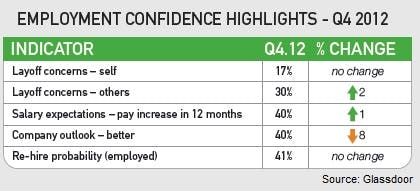An interesting pattern begins to emerge when you look at which issues leaders seem to struggle with clearly identifying as areas of weakness or risk within their organization. Independent of culture, geography or industry, the same areas or threats arise again and again.
Consider them Blind Spots – those unseen things that create danger that we don’t react to until too late. Excelling at never being blind to these issues will clearly make the difference between being average and being great in your career.
- Blind Spot #1: Under-communicating strategic direction and priorities
Priorities are never as clear as we think. In our world of hyper-information availability and constant communication, multiple sources of input drastically dilute your staff’s focus on top priorities and organizational goals. Consider it a competition for an employee’s mindshare – your company’s strategic goals versus email, day-to-day business, side projects, voicemail, family, friends and the latest YouTube viral video.
An effective leader approaches gaining mindshare for priorities like any other advertising campaign – by increasing volume and frequency to cut through the clutter. Every meeting, every one-on-one, should start by aligning the current topic with the top priorities, creating a clear and compelling message.
- Blind Spot #2: Poorly communicating expectations
Without clear definitions of success, management and employees can be aiming for very different levels of performance, creating significant risk in the execution of strategic projects. There is nothing that sucks energy out of a team more than thinking they’ve met or exceeded key objectives, only to be told the expectations were much different.
Starting with a clear vision of a project and how it relates to overall priorities, great managers set precise targets, timeframes and other explicit measures at the beginning. After a short duration of time, managers need to check back in order to ensure alignment with that vision. This not only prevents any drift from the goals, but also allows for corrections and an ability to add resources if necessary before a small issue become a big one.
- Blind Spot #3: Waiting for poor performance to improve – Hope is not a strategy
Dealing effectively with low performers can be difficult and time consuming. Too often, it simply goes unaddressed while leaders hope that employees improve.
Hope is not a strategy.
Frequently, managers are perplexed about what the root performance issues are and how to solve them; their confusion results in inaction. Learn how to assess problems and then take quick action in order to drive faster improvement and reduce the risk of unrecoverable failure for a team. Like it or not, the manager who spent time “hoping” things would get better is mostly like the one getting replaced when failures happen.
- Blind Spot #4: Buying into the myth of the “Irreplaceable Employee”
The warning signs of an “irreplaceable employee” who needs to go are usually clear: low team morale, high team turnover, disparagement of upper management, poor communication skills. Yet, management will choose to tolerate the negative impacts.
Why? They think the “irreplaceable” person has unique skills and relationships, and that the destructive behaviors are the price for getting results. This is a dangerous myth as organizations have an almost infinite capacity to adapt to the loss of a single person.
Organizations bounce back quickly and ultimately thrive in the near term. Don’t be afraid to make this change!
- Blind Spot #5: Investing too much time trying to coach radical change
People behave the way they do because their behavior makes sense to them based on the way they think and see the world. If this doesn’t mesh with your team’s style, organization’s culture, or your needs as a manager, there is only so much you can do to create a sustainable change in their fundamental behavior.
One to 10 degrees of change is possible; 90 degrees is not. Coaching for new perspective or new skills is more successful. Managers need to assess whether someone is just a bad fit for the organization or would actually benefit from good executive coaching.
Often it only takes small changes in the behavior or viewpoint of a manager to create amazing changes in a team’s performance. Learn more about the Blind Spots and approaches to minimizing their negative influence. Down load the complete whitepaper free at http://tiny.cc/Top10BlindSpots.
